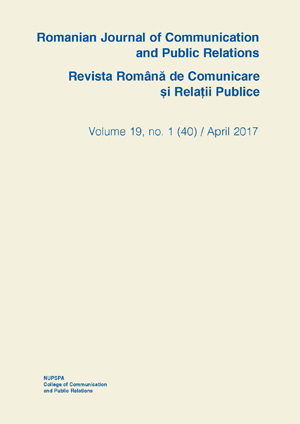Nation Branding in Romania After 1989: A Cultural Semiotic Perspective
Nation Branding in Romania After 1989: A Cultural Semiotic Perspective
Author(s): Bianca-Florentina CheregiSubject(s): Media studies, Semiology
Published by: Editura Comunicare.ro
Keywords: semiosphere; nation branding; semiotic borders; dual coding; national identity
Summary/Abstract: This paper discusses four nation branding post-communist campaigns initiated by the Romanian Government, from a cultural semiotic perspective, as developed by the Tartu-Moscow-Semiotic School. In so doing, it focuses on analyzing advertising and national identity discourses inside the semiospheres. Moreover, the paper investigates how elements of neoliberal ideology are addressed in the governmental campaigns, considering the “marketization of public discourse” (Fairclough, 1993). Nation branding in post-communist Romania is a distinctive phenomena, compared to other countries, especially from Western Europe. In transition countries, nation branding is often mentioned because of the constant need to reconfigure national identity by dissociating from the communist past (Kaneva, 2012). In Romania, nation branding is also a public issue discussed in the media, connected to the ways in which the international press portrays the country or to the migrants’ actions. In this context, Romania’s nation brand represents a cultural space and the campaigns mobilize cultural symbols as systems of signs necessary for the existence and functioning of advertising discourses.Using a semiotic analysis linked to the field of cultural semiotics (Lotman, 2005/1984), this article analyzes four nation branding campaigns initiated by the Romanian Government (Romania Simply Surprising – 2004, Romania Land of Choice – 2009, Explore the Carpathian Garden – 2010, and Discover the Place Where You Feel Reborn – 2014), considering elements such as semiotic borders, dual coding and symbols. The results show that the campaigns are part of four different semiospheres, integrating discursive practices both from advertising and public diplomacy when communicating the national image to the internal (citizens) or external (international) audiences.
Journal: Revista Română de Comunicare şi Relaţii Publice
- Issue Year: 19/2017
- Issue No: 1
- Page Range: 27-49
- Page Count: 23
- Language: English

